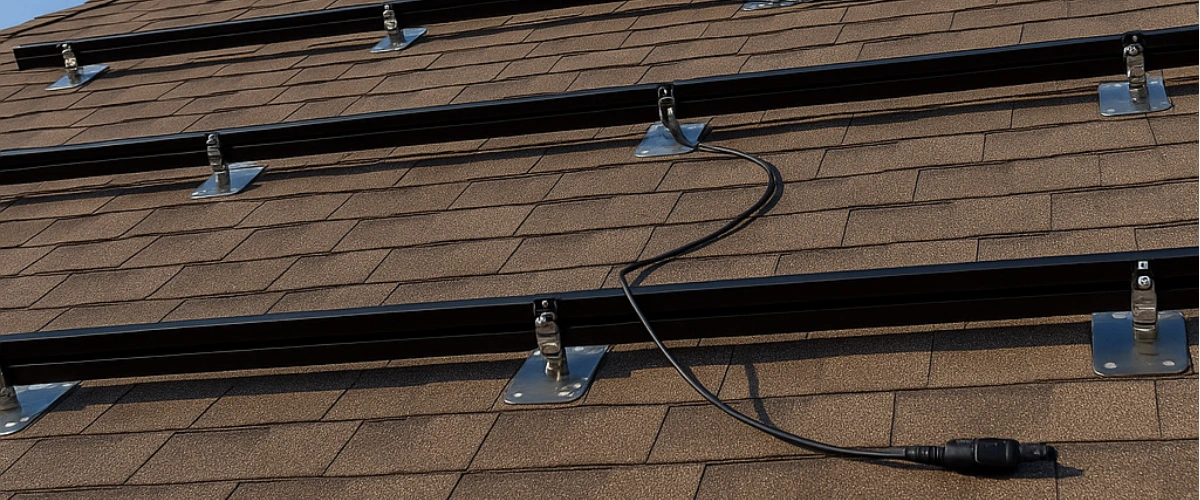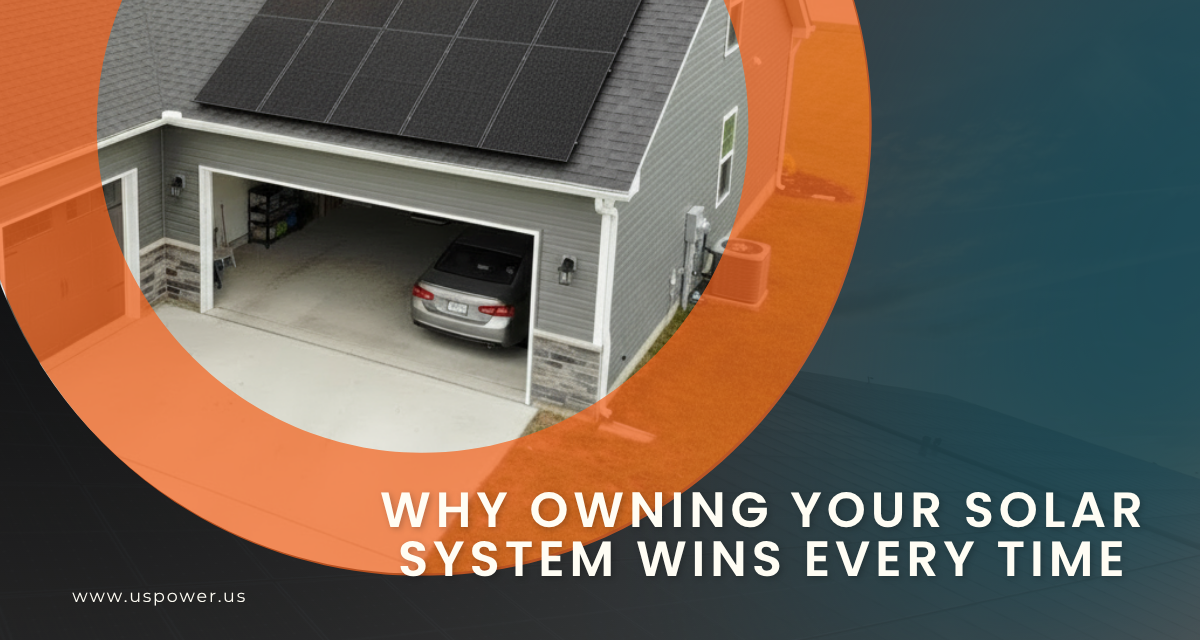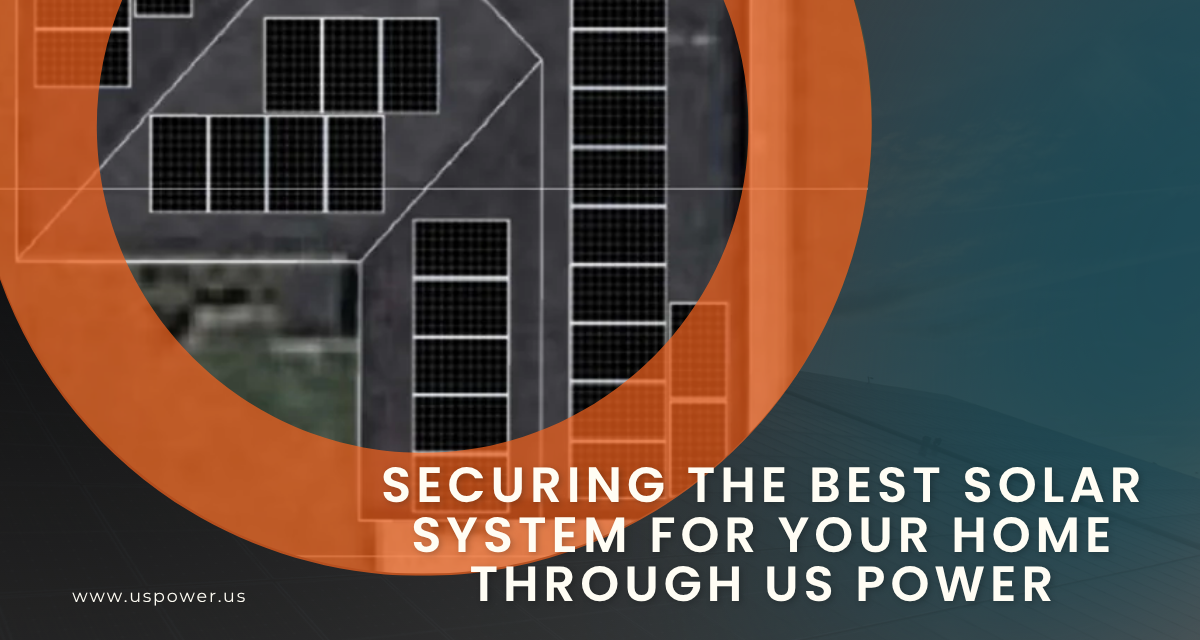Future-Proof Your SoCal Home with the Right Solar System Size

Solar and Roofing Advisor
Undersized solar leads to costly retrofits and lost savings. Discover how sizing your SoCal solar system correctly with US Power now avoids future headaches.

In Southern California, where electricity rates are among the highest in the country, under-sizing your solar system can be an expensive regret. Many homeowners regret not installing extra panels up front — especially after adding battery storage or increasing household electrification. At US Power, we help local homeowners future-proof their homes using our exclusive Qcells partnership, providing American-made, high-efficiency panels and expert system design. Read on to learn how oversizing by just 10-20% now can save you thousands in the long run.
Imagine this:
You installed solar a few years ago when your household demand was “just right.”
Things were great — your system covered 100% of usage, maybe even a little extra.
Then you added a pair of batteries (or thought about an EV or a heat pump), and suddenly your system isn’t keeping up like you thought it would.
This scenario is cropping up more often than you might think. One homeowner’s story sums it up:
“After adding batteries … I regret not getting another 2–3 panels … Last year, solar covered 105% of our usage, but now … I think it will drop to below 100%.”
This isn’t just remorse — it’s a cautionary tale, especially for SoCal residents where energy demand and costs are both high.
Why Many SoCal Homeowners Regret Undersizing Their Solar
Retrofitting Later Costs More — Soft Costs Add Up
When you decide to expand later, you don’t just pay for panels. You’re paying for:
- Additional permitting
- Engineering and design
- Labor (which might be higher later)
- Possible system reconfiguration (inverters, wiring, mounting)
As many solar pros say, the soft costs of adding capacity later often make it more expensive than building “extra” capacity from the start.
See our guide on step-by-step finding solar installers near you for tips on planning installations right.
Future Electrification Drives Energy Use Higher
In Southern California, electrification trends are accelerating:
- More homeowners adopting EVs
- Transition to heat pumps for water heating or HVAC
- Smart homes, batteries, induction stoves — and other electric loads
Because of this, designing for just today’s usage can leave you underpowered tomorrow. Many homeowners in broader discussions recommend sizing your system 10%+ larger than current usage, precisely to account for these future loads. For a deeper dive into future-proofing with solar, see why every California homeowner needs a solar battery in 2025.
Storage Changes Your Energy Profile
Adding a home battery shifts how your system is used:
Batteries designed for outage readiness often charge daily to maintain a reserve. That means energy that could have gone to other home loads goes into storage instead. One real user reported ~3 kWh/day of “extra” charging to keep their batteries ready for outages — which reduced the net offset of their solar system. So when you size your system, you need to account for not just your daily usage, but how much energy your storage system will draw.
Learn more in our solar and battery storage guide.
Utility Limits & Net Metering Can Restrict Expansion
In California, adding more solar later isn’t always straightforward:
Utilities or local regulators may limit how much installed capacity is allowed, often based on your historical usage. Adding panels later could force you into a new net metering tariff or even require a second meter — potentially jeopardizing favorable export credits or increasing complexity.
If your initial system was sized to meet “today’s needs,” you might find later that you’re boxed in by utility or regulatory constraints. Check out our Net Energy Metering 2.0 guide for details on NEM rules and expansion limits.
Local Southern California Context: Why This Matters More Here
To understand the real cost of under-sizing solar in SoCal, you need to look at local electricity rates and how much solar you can realistically generate.
High Electricity Rates in SoCal
For Southern California Edison (SCE) customers, the average residential rate is about 31.4¢ per kWh as of March 2025.
In San Diego, San Diego Gas & Electric (SDG&E) raised its average bundled residential rate to ~41.5¢/kWh in June 2025.
Statewide, California’s average electricity rate hovers around 31.6–31.9¢/kWh, significantly above the U.S. average.
These high rates mean every kilowatt-hour you generate on your roof is very valuable. Undersizing your system means missing out on offsetting expensive utility power.
Solar Production Potential in Southern California
Southern California gets excellent sun, which helps maximize the value of each panel:
A 5 kW rooftop system in Los Angeles can generate around 10,200 kWh annually. That means in SoCal, with strong irradiance, each kilowatt of solar capacity can generate a large volume of electricity — helping you offset more of your high-cost grid power.
High ROI — but Only If Sized Well
Because SoCal homeowners pay some of the highest residential electricity rates in the country, the return on investment (ROI) for solar is especially attractive:
Every extra kWh your system produces saves a lot, given how expensive utility power is locally. If you undersize your system, those “lost” kWhs could have a large dollar value — especially over the life of your system.
Why Oversizing with Qcells + US Power Is a Smart SoCal Play
At US Power, we strongly recommend designing your solar system with future expansion and local market conditions in mind — especially for Southern California. Here’s how our Qcells-plus-design approach maximizes value.
Highly Efficient, U.S.-Made Qcells Panels
Our factory-direct Qcells panels (from Dalton, Georgia) deliver high efficiency, which means more production per square foot — perfect for tight roof space. Because they are made in the U.S., they help meet Domestic Content Bonus requirements, increasing your eligibility for even more tax benefits.
Modeling for Future Loads
When you work with US Power, we don’t just size for what you use today — we run the numbers assuming:
- Battery storage (especially for backup)
- EV charging
- Heat pump upgrades
- Other future electric appliances
By planning for these now, you avoid expensive and disruptive upgrades later.
Maximizing High-Cost Avoided Power
With SoCal’s high rates (30 ¢/kWh+), every kWh of solar you produce avoids very expensive utility power. An oversized system means:
- More offset during peak times
- The ability to store more during the day and use stored power when grid rates are high
- A faster payback because your avoided cost (the “price” you save by not buying from the utility) is large
Supporting Incentives & Tax Credits
The 30% federal solar Investment Tax Credit (ITC) is still available (as of 2025), providing a major upfront savings boost. Because Qcells modules are domestically manufactured, your project may qualify for the +10% Domestic Content Bonus, increasing your effective credit. Oversizing your system now helps you get more value out of those incentives by increasing the overall installed kW.
Practical Questions to Ask When Designing Your SoCal Solar System
To avoid the regret of under-sizing, here are key questions to ask your installer (or ask us at US Power):
- Can we size for 15–20% more than current usage?
- Given future electrification and storage, can we model for “growth”?
- How many panels can physically fit on my roof?
- Considering orientation, shading, and roof geometry — what is the realistic max capacity?
- Which panels are we using, and where are they built? Qcells offers high efficiency and U.S.-made content — critical for incentives.
- What is the projected payback if I oversize? Run a financial model that includes avoided utility cost, tax credits, and depreciation.
- How will a battery change my usage and offset? If you add storage, how does that shift your daily solar-to-load balance?
- Am I risking losing net metering benefits if I expand later? What are your options? Will expanding force you onto a less favorable rate or meter structure?
In SoCal, More Panels Now ≠ Regret Later
For Southern California homeowners, undersizing your solar system isn't just a missed opportunity — it's a risk. Between ultra-high utility rates, excellent sunlight, and growing energy demand (EVs, batteries, heat pumps), going “just big enough” often leads to regret.
By building a system that’s 10–20% larger than your current load, using high-efficiency Qcells panels, and planning for future needs, you can:
- Avoid expensive retrofits
- Maximize your return on investment
- Capture more value from tax credits and incentives
- Protect yourself against future utility rate increases
At US Power, our exclusive partnership with Qcells and our design philosophy means we help you get maximum long-term value, not just short-term savings.
Ready to future-proof your home with a solar system that grows with you?
Schedule for a free Southern California–specific consultation, and let’s design a system that covers your needs today and tomorrow.
Related Articles
Our Related Blogs
Stop renting power—own it with Qcells solar panels + battery through US Power.
Go solar the right way! Install Qcells panels hassle-free through US Power.
Discover savings and reliability with solar + battery systems through US Power.
Our Solar and Roof Brand Partners








We empower communities and businesses to harness clean, renewable solar energy solutions that drive sustainable growth.
Ready to Own Your Power? Call us today!
818-650-8010
Copyright © 2025 US Power - Axia by QCells. All Rights Reserved.
Privacy is important to us, so you have the option of disabling certain types of storage that may not be necessary for the basic functioning of the website. Blocking categories may impact your experience on the website.
Essential
These items are required to enable basic website functionality.
Personalization
These items allow the website to remember choices you make (such as your user name, language, or the region you are in) and provide enhanced, more personal features.
Marketing
These items are used to deliver advertising that is more relevant to you and your interests.
Analytics
These items help the website operator understand how its website performs, how visitors interact with the site, and whether there may be technical issues.
We and our third-party partners use cookies and other technologies to enhance and track your experience on this site, conduct analytics, and personalize marketing to you. By using the site, you agree to our use of these technologies, including recording and monitoring your interactions with the site.
Get an instant solar estimate using satellite!










